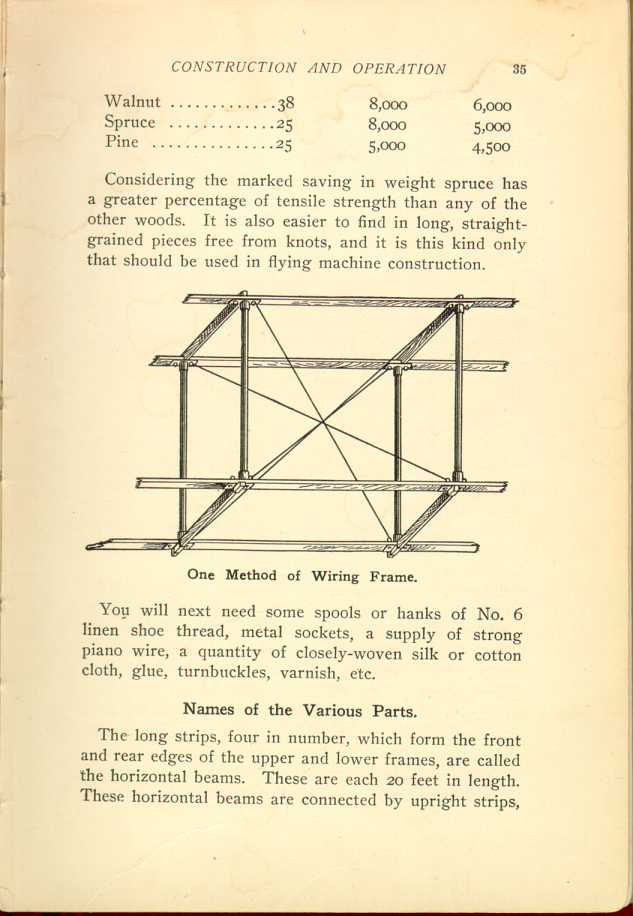Kind of Material Required.
There are three all-important features in flying machine construction, viz.: lightness, strength and extreme rigidity. Spruce is the wood generally used for glider frames. Oak, ash and hickory are all stronger, but they are also considerably heavier, and where the saving of weight is essential, the difference is largely in favor of spruce. This will be seen in the following table:
| Wood | Weight per cubic ft. in lbs. | Tensile Strength lbs. per sq. in. | Compressive Strength lbs. per sq. in. |
| Hickory | 53 | 12,000 | 8,500 |
| Oak | 50 | 12,000 | 9,000 |
| Ash | 38 | 12,000 | 6,000 |
| Walnut | 38 | 8,000 | 6,000 |
| Spruce | 25 | 8,000 | 5,000 |
| Pine | 25 | 5,000 | 4,500 |
Considering the marked saving in weight spruce has a greater percentage of tensile strength than any of the other woods. It is also easier to find in long, straight-grained pieces free from knots, and it is this kind only that should be used in flying machine construction.
You will next need some spools or hanks of No. 6 linen shoe thread, metal sockets, a supply of strong piano wire, a quantity of closely-woven silk or cotton cloth, glue, turnbuckles, varnish, etc.
